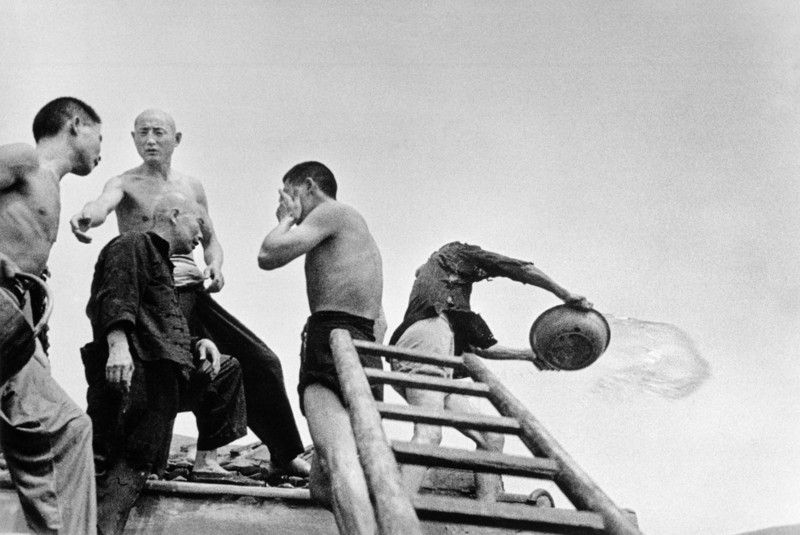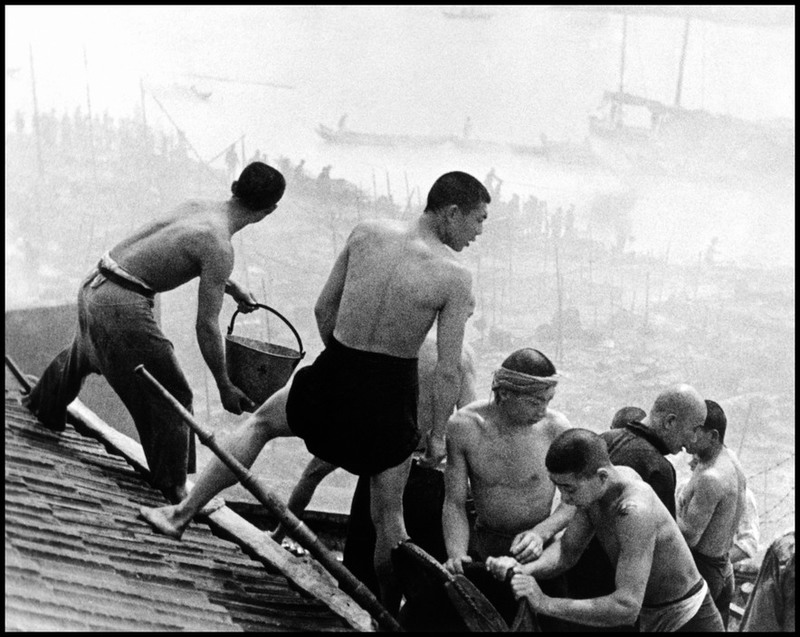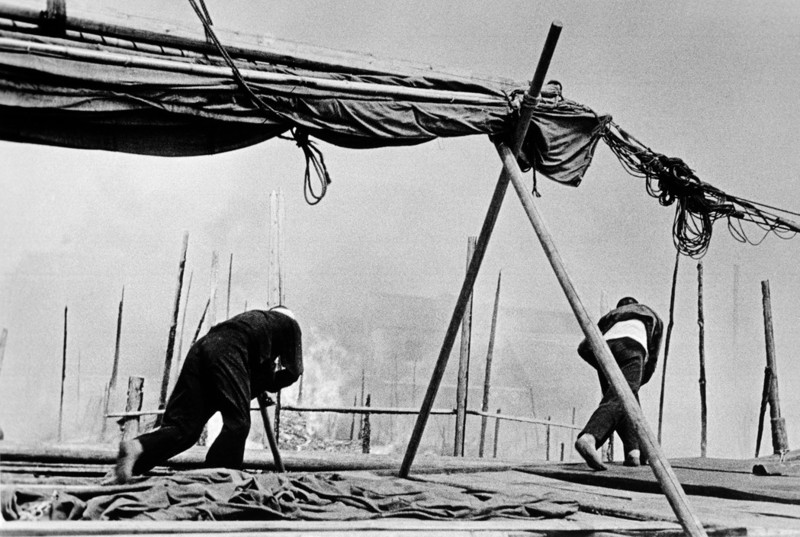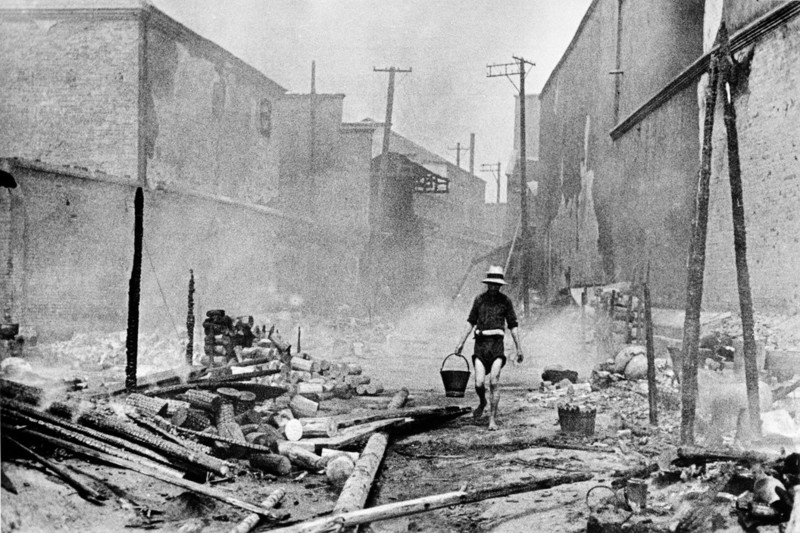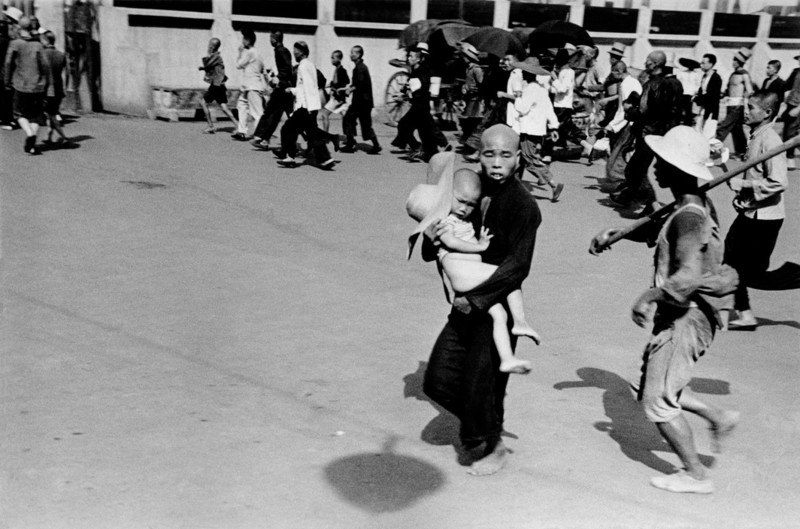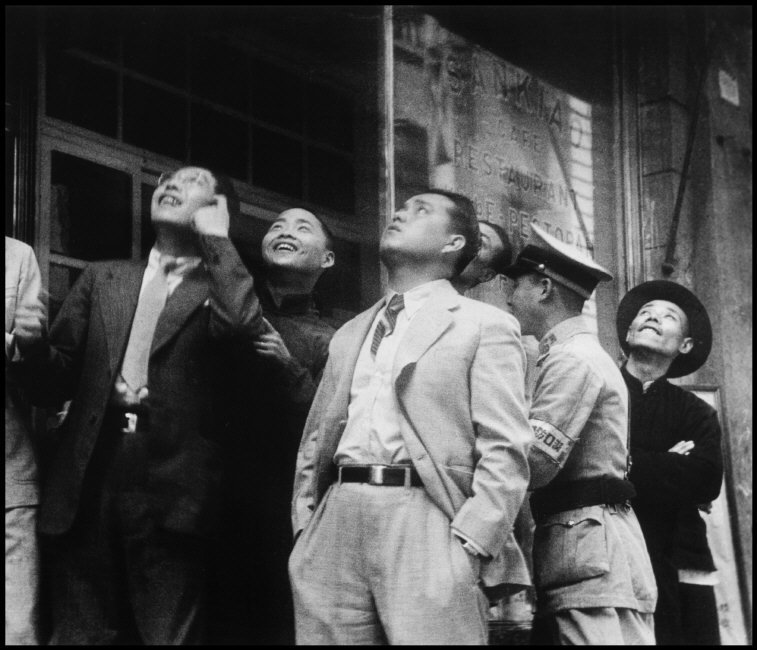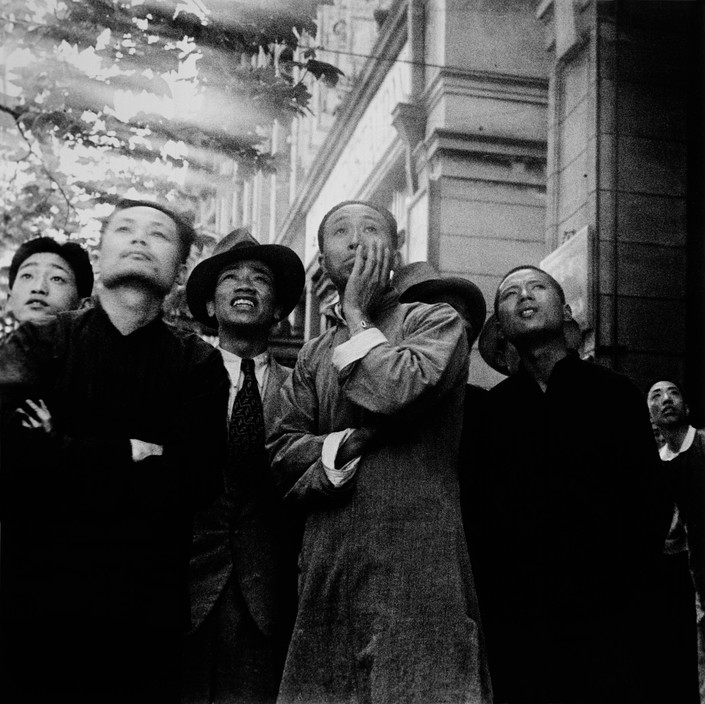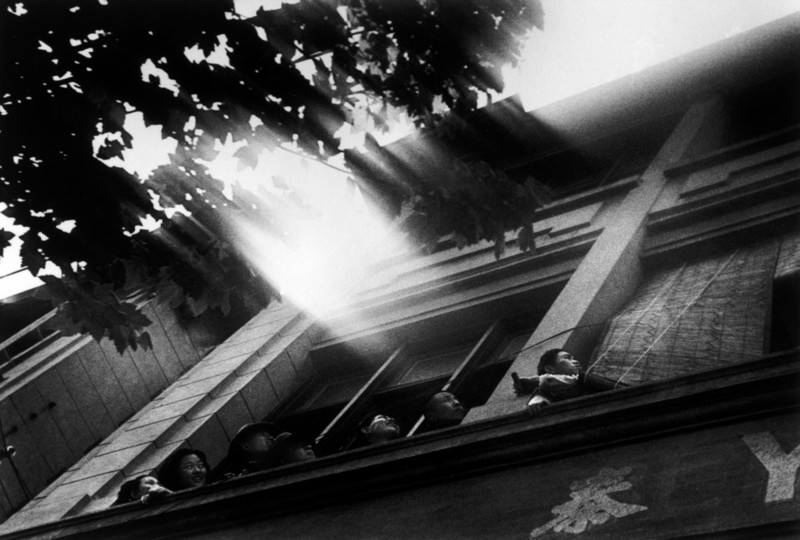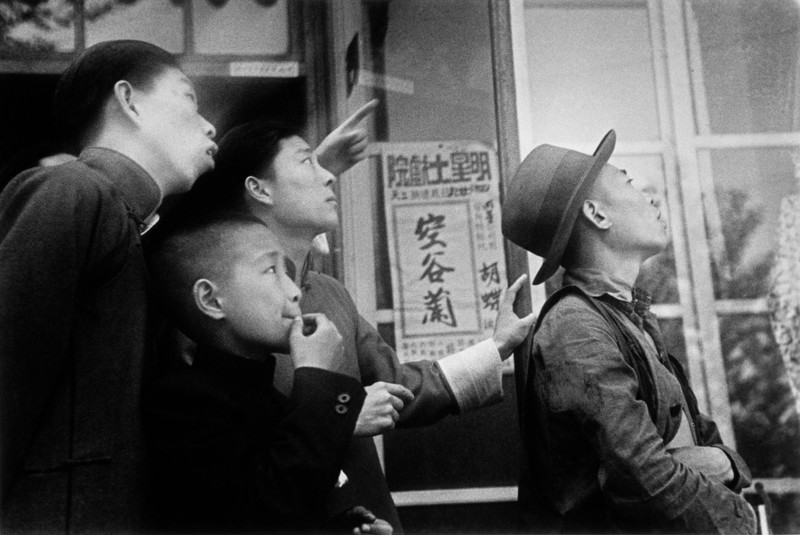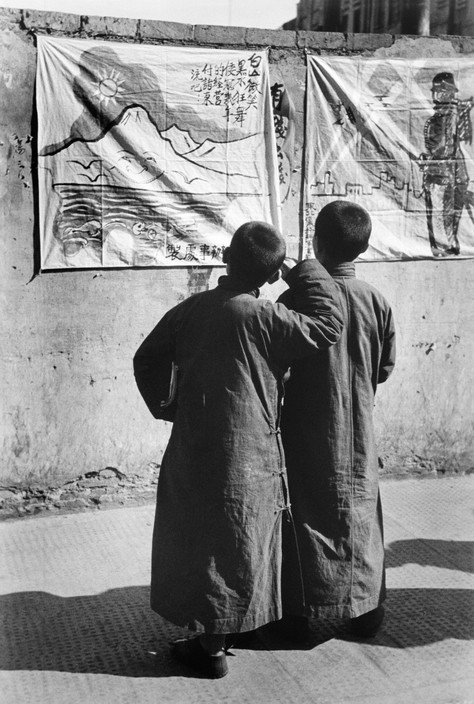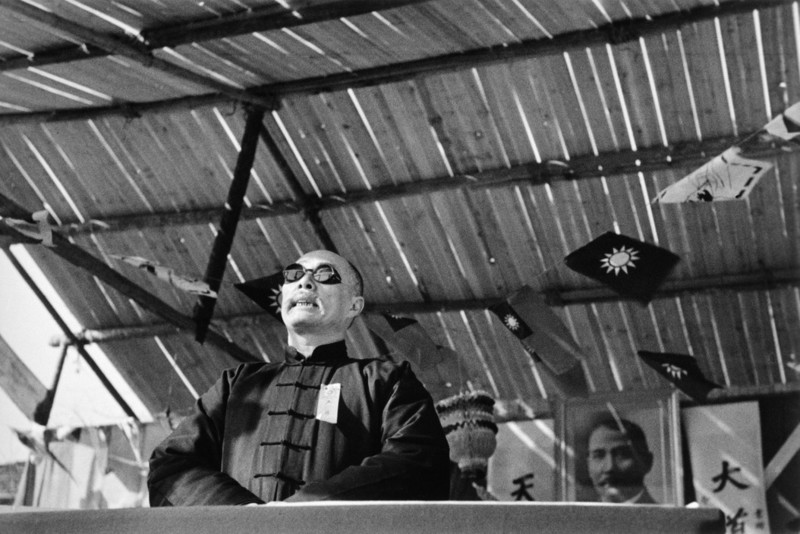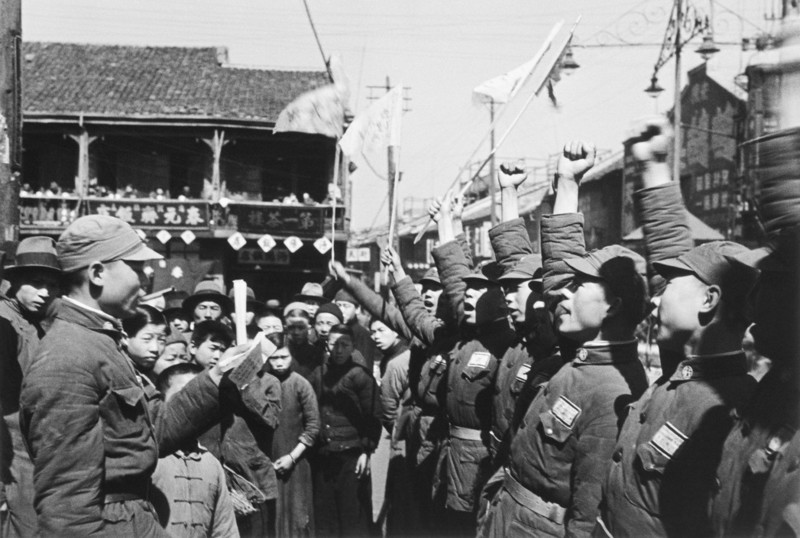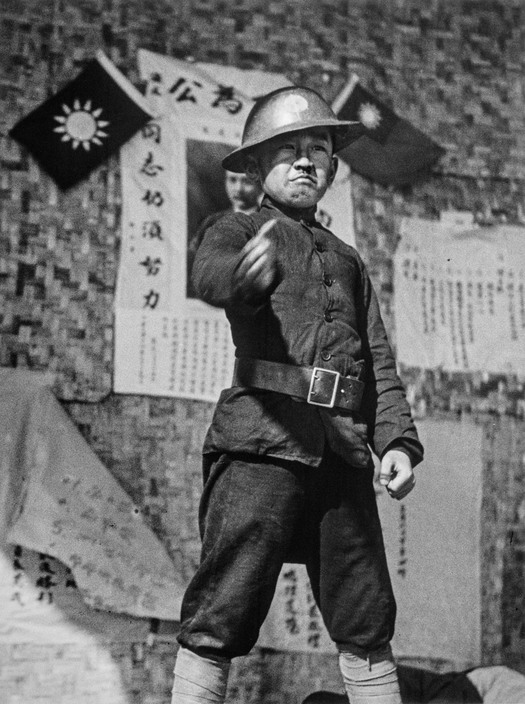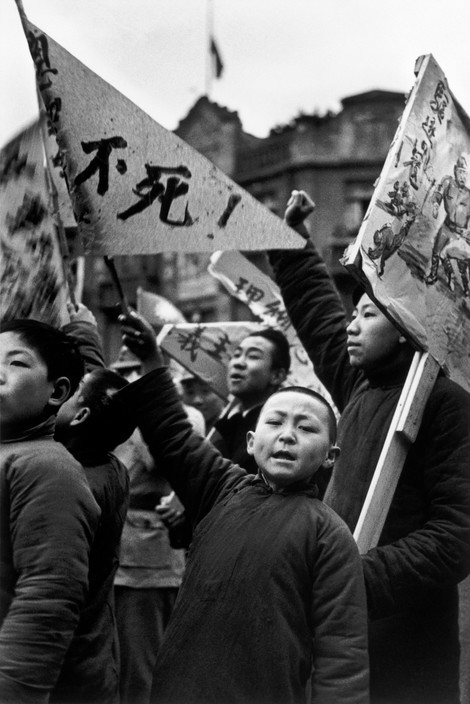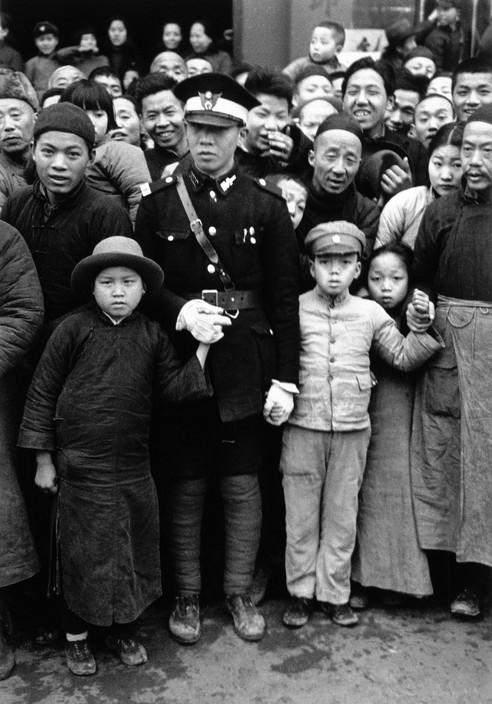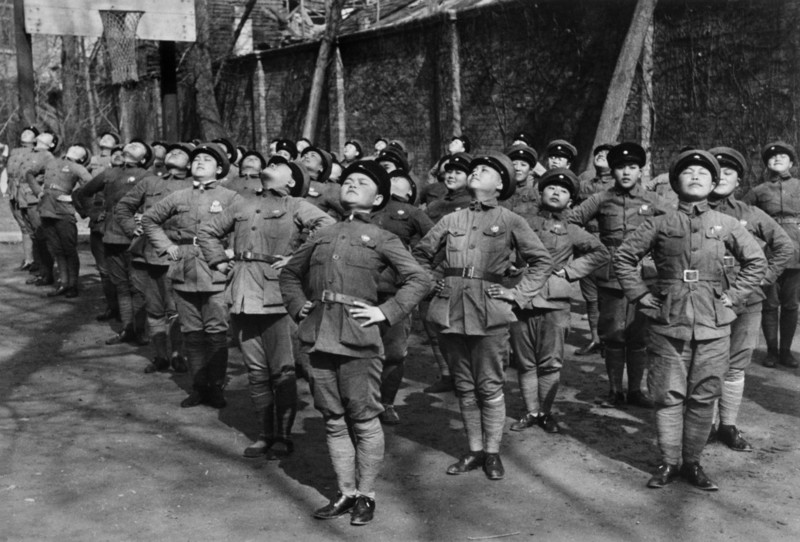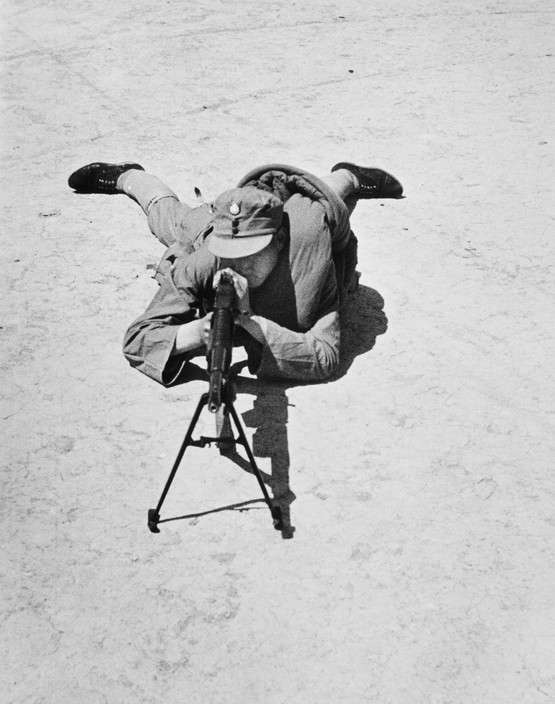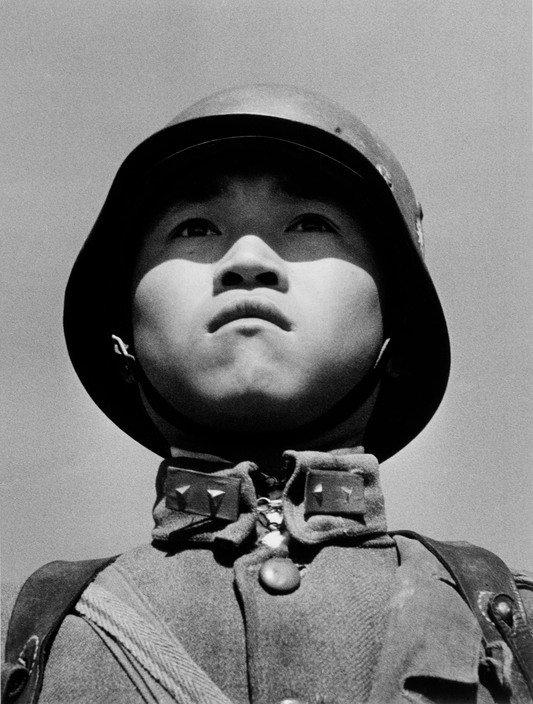Robert Capa's Photography
The kodachrome photographs on the 'Hankou at War' page were taken by Robert Capa and published in Life Magazine on July 19, 1938. Robert Capa (1913-1954) was a war photographer and photojournalist who spent part of 1938 in Hankou documenting the war. To learn more about Robert Capa and see more of his work view his profile here. Below are a selection of his photographs that are in the Hankou area.
The photographs below, taken between July and September 1938, capture the effects of Japanese air raids on the city and its inhabitants. The final photograph shows people running for cover as an air raid begins. Capa captures how an air raid's destruction shapes the city's landscape. Inhabitants must renegotiate how their relationship to the city -- whether thats climbing on ladders to put out fires, as in the first two photos; or changing how one physically moves through the space as we see in the third and fourth photos; or as in the last photo in which people run for cover, the city has become defined as a place with protected and unprotected areas, and as we see by the destruction through bombing, what is a safe space and what is not safe is in flux.
On April 29, 1938, Emperor Hirohito's Birthday, Robert Capa captured the expressions of people in Hankou watching a fight between Japanese bomber planes and Chinese fighter planes. People, men and women, young and old, have stopped in the middle of their day and have looked up. The street has a site for a sort of spectacle. Those inside their homes lean out the window, straining to get a better view from their wing seats. Whereas Japanese bombers alone transforms the space of the street into an unprotected space that one must run from, when Japanese bombers are met by Chinese fighter planes the street with its open sky becomes the ideal place to watch. This is not, however, a spectacle of mere entertainment. If the Chinese fighter plane goes down the street will once again become an unprotected space one must flee from. The fate of the city, of the war, depends on a series of spectacles like this. The mix of expressions in a single photograph is noteworthy -- expectations of the outcome of this fight, understanding of its significance varies from person to person and with each moment of the fight. Taken as whole, this set of photographs shows how the war has changed people's behavoir within a city: people have turned their faces towards the sky; the street is not a only a way to move through space but becomes a site for watching; watching the fight in the sky is also a communal act, people stop together as groups, point out the action, share a window's balcony space together.
Spectacles of war were also constructed and organized in Hankou. Below are a series of photos from March 1938 that capture the strategies used to build up patriotism. In the first photograph, children look at banners celebrating Chinese resistance to Japanese invasion. The following photographs were taken on March 12, 1938 at a patriotic rally commemorating the 13th anniversary of Sun Yat-Sen's death and celebrating the Chinese resistance to the Japanese invasion of China. We see leaders giving speaches, crowds answering rallying cries, an actor in a play, young boys holding signs cheering, and a man in uniform holding a child's hand at the forefront and center of a wall of spectators. The inhabitants of the city are brought together in close proximity for this event meant to inspire. Resistance needs to be celebrated in order to be maintained. The last photograph of the crowd contrasts with the others. This crowd is not activley participtating but rather closely observing, some with smiles others with strained looks. The front four people, the child, the solider, the second child, and the man wearing an apron, all are holding hands which form a line, which appears to hold in the crowd. Is the uniformed man confident in these displays of patriotism? Do the children realize the weight of what is happening?
Hankou was not only a place physically involved in the war and a site for spectacle, but was also the training ground for soliders. The photographs below capture some of the scenes of training. Once again Robert Capa's ability to capture a range of expressions gives these images a rich interpretive possibility.
